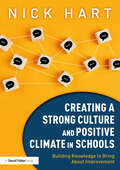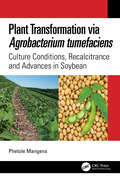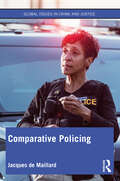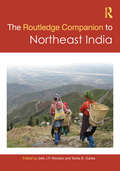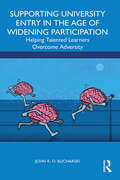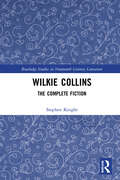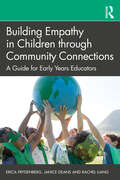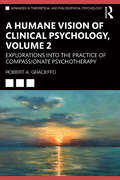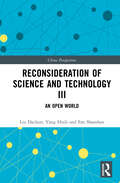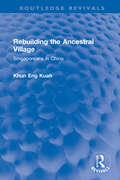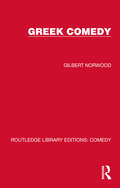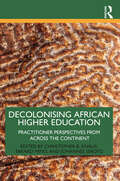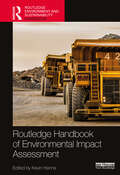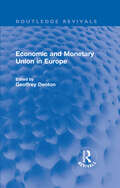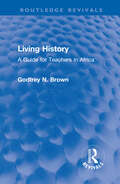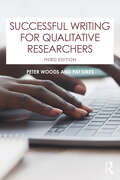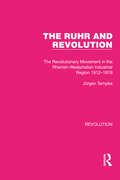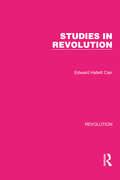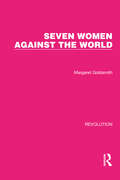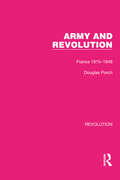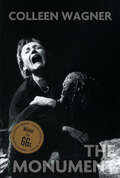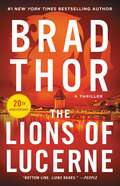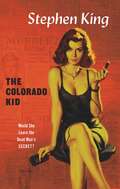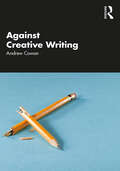Special Collections
Benetech’s Global Certified Accessible Titles
Description: Benetech’s GCA program is the first independent third-party EPUB certification to verify ebook accessibility. By creating content that is born accessible, publishers can meet the needs of all readers. Learn more: https://bornaccessible.benetech.org/
- Table View
- List View
Creating a Strong Culture and Positive Climate in Schools
by Nick HartIf there is one thing that school leaders need to get right, it is school culture. When they do, children learn more and colleagues have a stronger sense of purpose - they are more motivated and ultimately more fulfilled. Creating a strong culture and a positive climate requires an understanding of the complexity of school life and this begins by building knowledge. This book supports leaders to do just that. Drawing on ideas from different domains, this insightful book reveals the role of concepts such as autonomy and trust in school improvement. Each chapter sets out the specific knowledge and expertise required by school leaders for great cultural leadership and offers practical examples and case studies to show how they can be applied in different school contexts. Creating a Strong Culture and Positive Climate in Schools is an essential lens through which to examine the common problems faced by school leaders. It is invaluable reading for all those wanting to become more expert in school leadership and to better solve the everyday problems that arise from leading a school.
Plant Transformation via Agrobacterium Tumefaciens
by Phetole MangenaPlant Transformation via Agrobacterium Tumefaciens compiles fundamental and specific information and procedures involving in vitro soybean transformation, which forms the basis for the Agrobacterium-mediated genetic manipulation of soybean using plant tissue culture. This method serves as one of the most preferred, reliable and cost-effective mechanism of transgene expression in both leguminous recalcitrant species and non-legume crops. The technology is favoured due to its simplicity, feasibility and high transformation rates that are so far achieved mostly in monocot plants and a few dicot genotypes. This book provides a comprehensive review of plant transformation which remains necessary for many researchers who are still facing protocol-related hurdles. Among some of the major topics covered in Plant Transformation via Agrobacterium Tumefaciens are the history and discovery of Agrobacterium bacterium, longstanding challenges causing transformation inefficiencies, types and conditions of explants, development of transgenic plants for stress resistance, and the role of transgenic plants on animal/human health, including the environment. Plant Transformation via Agrobacterium Tumefaciens helps the reader to understand how soybean, like many other orphan legume crops, faces the risk of overexploitation which may render the currently available varieties redundant and extinct should its narrow gene pool not improve. Plant transformation serves as a key technique in improving the gene pool, while developing varieties that are drought tolerant, have enhanced nutritional value, pest resistant and reduce the destruction by disease causing microorganims. This book is an essential foundation tool that is available for researchers and students to reinforce the application of Agrobacterium-mediated genetic transformation in soybean.
Comparative Policing
by Jacques de MaillardThis book is a systematic and comparative analysis of police systems in the Western world, looking at their structure and how they tackle contemporary social problems, such as economic austerity, multi-level governance, transnational change, relations with minorities and transformation of delinquency. Core content includes: • Comparative histories of the formation of national police systems; • A discussion of centralised and decentralised police systems; • International differences in community policing; • A review of different police strategies in fighting delinquency and reducing urban disorder; • A comparative analysis of different ways of controlling police misconduct; • An exploration of different models of plural policing. While other books focus on policing in relation to measures effective in decreasing delinquency and augmenting security, this book considers the political, professional, administrative and political economic parameters which frame and shape the course of police reforms. It also explores how operational policing is shaped by the cultural and institutional contexts in which it is located. It is essential reading for students engaged in international police studies and comparative criminal justice.
The Routledge Companion to Northeast India
by Jelle J.P. Wouters and Tanka B. SubbaThe Routledge Companion to Northeast India is a trans-disciplinary and comprehensive compendium of a vital yet under-researched region in South Asia. It provides a unique guide to prevailing themes, theories, arguments, and history of Northeast India by discussing its life-forms – human and not – languages, landscapes, and lifeways in all its diversity and difference. The companion contains authoritative entries from leading specialists from and on the region and offers clear, concise, and illuminating explanations of key themes and ideas. A hands-on, practical, and comprehensive guide to Northeast India, this companion fills a significant gap in the literature and will be an invaluable teaching, learning, and research resource for scholars and students of Northeast India Studies, South Asian and Southeast Asian societies, culture, politics, humanities, and the social sciences in general.
Supporting University Entry in the Age of Widening Participation
by John R. BlicharskiDesigned for those working with widening participation students, this key guide provides all of the information needed to support learners from widening participation backgrounds and ensure fair admission to university can be effectively delivered. Providing the reader with a theoretical and practical understanding of how to reach non-traditional students, this book addresses the realities of the challenges the modern university widening participation applicant faces. Each chapter offers a fresh and engaging insight into widening participation and explores the fascinating range of factors that determine whether students from non-traditional backgrounds successfully access university and benefit from it. This book systematically considers the barriers, approaches and solutions required to reach university and encourages a ‘best evidence’ approach that could enable the people of tomorrow to have more equal access to learning and through that, a positive and healthy future on a planet under severe challenge. Ideal reading for all those working in widening participation or committed to expanding the diversity of their student populations, this book offers the insights, advice and considerations needed when deciding how best to help often highly vulnerable and unsupported students transform their lives through learning.
Wilkie Collins
by Stephen KnightThis book provides the first comprehensive overview of the complete works of Wilkie Collins’s. Examining his vast array of novels and short stories, this volume includes analysis of the social, historical, and political commentary Collins offered within his works, illuminating Collins as more than a successful crime and sensation author, or the fortunate recipient of Dicken’s grand patronage, but as a hard-thinking and lively-writing part of the rich mid-Victorian literary scene. Overall, Collins is seen as a master of narratives which deal with social and personal issues that were much debated in his fifty-year authorial period. Close attention is paid to the events, themes, and characterization in his fiction, revealing his analytic vigor and the literary power of that period and context. Delivering fresh insight into the variety and richness of Collins’ themes and arguments, this volume provides a key source of information and analysis on all Collins’ fiction.
Building Empathy in Children through Community Connections
by Erica Frydenberg and Janice Deans and Rachel LiangTaking a unique approach, which highlights lived experience and engagement with community, this book guides the reader on how to create learning environments in which children are encouraged to develop relationships, build meaningful connections and take action which contributes to the wellbeing of their own communities. Through evaluations and feedback from participating professionals, as well as children’s learning in the form of artworks and photos, Building Empathy in Children through Community Connections: A Guide for Early Years Educators highlights how community partnership programs between children and community groups builds empathy and wellbeing in early childhood. Drawing on extensive research and professional experience in psychology and early childhood, it provides details of various community connections programs and considers the ways in which early learning settings can engage with their communities as they meet the requirements and objectives of the curriculum. Each chapter provides practical advice on implementation as well as take-home messages intended to encourage and enable community engagement. Demonstrating how young children can develop empathy through building community connections, this book is a vital resource for early childhood educators as well as parents and those working in community programs and early childhood settings.
A Humane Vision of Clinical Psychology, Volume 2
by Robert A. GraceffoThe purpose of A Humane Vision of Clinical Psychology, Volume II, is to encourage clinical and personal reflection on the part of reading clinicians, so as to foster more thought about the meaning and complexities of the therapeutic encounter. It does so by offering three clinical examples and a searching discussion of what each might teach us about the case at hand, ourselves, and the world. The book begins with an honest exploration of the limitations accompanying any and every attempt to write about the action of psychotherapy, which the first volume characterised as ineffable. More particularly, it is suggested that the deepest therapeutic phenomenon, experiential "proximity," is itself neither fully observable to the participants nor capturable by a verbal account. These concessions, which effectively confine the therapeutic "mechanism" to the air of every encounter, threaten to make descriptions of psychotherapy useless. However, while we can never rightly describe the fundamental cause of change, we can describe its observable corollaries. It is then suggested that certain therapeutic postures—those of kindness, openness, and sameness—facilitate the expansion of the other’s cognitive apparatus and thereby the "knowns" that inhabit their minds (the main goal of therapy, per Volume I). A Humane Vision of Clinical Psychology, Volume II, is valuable for therapists, psychologists, psychiatrists, and other practitioners as well as graduate and undergraduate students in the fields of psychiatry, psychology, psychotherapy, mental health, social work, and philosophy.
Reconsideration of Science and Technology III
by Liu Dachun and Yang Huili and Fan ShanshanDrawing on debates from traditional and postmodern thoughts on science and technology, the title builds a new theoretical framework to reconsider science and technology, integrating the opposing viewpoints that either justify science or negate it. As the third volume of a three-volume set that proposes to reconsider science and technology and explores how the philosophy of science and technology responds to an ever-changing world, this final volume seeks to restore the cultural implications of science. Across the six chapters, the authors probe the prospect of a pluralistic scientific culture, including discussions of diversified value choices, the tension between reason and unreason, other binary characteristics of scientific knowledge, including objectivity and uniqueness, universality and locality, as well as the loss, awakening and reconstruction of scientific culture. The authors call for a transformation of scientific culture from a dominant culture to an affirmative one and envision a free and open world of science and technology. The volume will appeal to scholars and students interested in the philosophy of science and technology, the ideology of scientism and anti-scientism, modernism and postmodernism, Marxist philosophy and topics related to scientific culture.
Rebuilding the Ancestral Village
by Khun Eng KuahOriginally published in 2000, this second edition was first published in 2010. This is a discussion of the relationship between one group of Singapore Chinese and their ancestral village in Fujian in China. It explores the various reasons why the Singapore Chinese continue to want to maintain ties with their ancestral village and how they go about reproducing Chinese culture (in the form of ancestor worship and religion) in the village milieu in China. It further explores the reasons why the Singapore Chinese feel morally obliged to assist their ancestral village in village reconstruction (providing financial contributions to infrastructure development such as the buildings of roads, bridges, schools, hospitals) and to help with small scale industrial and retail activities. Related to this is how the village cadres and teenagers, through various strategies, managed to encourage the Singapore Chinese to revisit their ancestral village and help with village reconstruction, thereby creating a moral economy. The main argument here concerns the desire of the Singapore Chinese to maintain a cultural identity and lineage continuity with their ancestral home. Ethnographically, this anthropological study examines two groups of Chinese separated by historical and geographical space, and their coming together to re-establish their cultural identity through various cultural and economic activities. At the theoretical level, it seeks to add a new dimension to the study of Chinese transnationalism and diaspora studies.
Greek Comedy
by Gilbert NorwoodOriginally published in 1931, this book surveys the origin and development of Greek Comic Drama, with full discussion not only of Aristophanes and Menander but also of other important playwrights whose work had usually received scant notice because only fragments of it have survived. The important papyrus-finds of the previous forty years have been expounded and used. The final chapter is an introduction to comic metre and rhythm.
Decolonising African Higher Education
by Christopher B. Knaus and Takako Mino and Johannes SerotoAcross the African continent, college student activists have long fought to decolonise African institutions. Reflecting ongoing Western colonisation, however, Indigenous African languages, thought, and structures remain excluded from African universities. Such universities remain steeped in Eurocentric modes of knowing, teaching, researching, and communicating. Students are rarely afforded the opportunity to learn about the wealth of knowledge and sustainable wisdom that was and is generated by their own home communities. Such localised Indigenous African perspectives are critical in a world committed to anti-Black racism, capitalist materialism, and global destruction. This book thus clarifies decolonial efforts to transform higher education from its anti-Black foundation, offering hope from universities across the continent. Writers are university administrators and faculty who directly challenge contemporary colonial education, exploring tangible ways to decolonise structures, curricula, pedagogy, research, and community relationships. Ultimately, this book moves beyond structural transformation to call for a global commitment to develop Indigenous African-led systems of higher education that foster multilingual communities, local knowledges, and localised approaches to global problems. In shifting from a Western-centric lens to multifaceted African-centrism, the authors reclaim decoloniality from co-optation, repositioning African intellectualism at the core of global higher education to sustain an Ubuntu-based humanity.
Routledge Handbook of Environmental Impact Assessment
by Kevin HannaGlobally, environmental impact assessment (EIA) is one of the most enduring and influential environmental management tools. This handbook provides readers with a strong foundation for understanding the practice of EIA, by outlining the different types of assessment while also providing a guide to best practice. This collection deploys a research and practice-based approach to the subject, delivering an overview of EIA as an essential and practical tool of environmental protection, planning, and policy. To best understand the most pertinent issues and challenges surrounding EIA today, this volume draws together prominent researchers, practitioners, and young scholars who share their work and knowledge to cover two key parts. The first part introduces EIA processes and best practices through analytical and critical chapters on the stages/elements of the EIA process and different components and forms of assessment. These provide examples that cover a wide range of assessment methods and cross-cutting issues, including cumulative effects assessment, social impact assessment, Indigenous-led assessment, risk assessment, climate change, and gender-based assessment. The second part provides jurisdictional reviews of the European Union, the US National Environmental Policy Act, recent assessment reforms in Canada, EIA in developing economies, and the EIA context in England. By providing a concise outline of the process followed by in-depth illustrations of approaches, methods and tools, and case studies, this book will be essential for students, scholars, and practitioners of environmental impact assessment.
Economic and Monetary Union in Europe
by Geoffrey DentonIn its pursuit of economic integration, economic and monetary union (EMU) had become a primary commitment for the European Community. Originally published in 1974, this study sets out to examine the meaning of economic union and its relationship with monetary union. The contributors look at the problems and costs for attaining economic union for the member states of the EEC at the time. Steven Robson writes on economic management. Paul Woolley examines the integration of capital markets. Santosh Mukherjee looks at the implications of labour market policy. Geoffrey Denton and Adam Ridley consider the impact of economic and monetary union on regional problems. Alan Prest is concerned with tax harmonisation specifically Value Added Tax and Corporation Tax and Douglas Dosser discusses the development of a European Community budget. Though the long-term benefits of EMU were clear, in the short term it would impose strains and pressures on national economies and particular sectors within them. This study goes a long way to clarifying where these difficulties would arise and suggests some ways of coping with them.
Living History
by Godfrey N. BrownOriginally published in 1967, this book represents the late Professor Brown’s twin skills as historian and as educationalist at their best. It is one of a series of books which he edited, and which was offered to Africa teachers in training. The series was designed to help those who were called upon to teach the many subjects of the primary school curriculum or two or more subjects with the junior forms of secondary schools. It is dedicated to the proposition that giving a good basic education to a country’s children is vital to its development programme. Godfrey Brown’s book starts with a discussion of the place and purpose of history in education – why do we teach it to children? He then describes methods of teaching language skills in history, observation and (at some length) social development through history. He ends with The History of the Future and two practical appendices listing where the African teacher of history could obtain useful teaching material.
Successful Writing for Qualitative Researchers
by Pat Sikes and Peter WoodsThe fully updated third edition of Successful Writing for Qualitative Researchers includes new material on the nature of qualitative research and the significance of contemporary circumstances in which academic writers have to work, as well as ethical considerations and authorial responsibilities. It provides a wealth of information and practical tips required to successfully translate qualitative research into writing. Using a wide range of examples, the authors provide tried and tested methods that explore the mindsets, strategies and techniques involved in successful qualitative writing, and the opportunities and rewards that are available. Considering the continuing pressure on researchers to produce high-quality writing in difficult circumstances, this book contains a wealth of information and provides guidance on: The nature of qualitative research The conditions for successful writing The responsibilities of the author Getting started and keeping going Organising your work Traditional and arts-based modes of writing Styles of writing Editing your work Preparing for publication Clear, concise, and engaging, this must-read guide is suitable for all those in the social sciences seeking to formulate their qualitative research into writing with maximum effectiveness, including undergraduates, postgraduates, and academics, whether in dissertations, theses, research reports, journal and magazine articles, conference papers or books.
The Ruhr and Revolution
by Jürgen TampkeThis book, first published in 1979, analyses the German November Revolution of 1919 and the years and conditions that led to it. It examines the economic, social and political background of the Ruhr up to the coal miners’ strike of 1912; how the war aggravated social hardship and rifts in the workers’ party; and, in detail, the revolution itself.
Studies in Revolution
by Edward Hallett CarrThis book, first published in 1962, is a collection of essays on the ideological origins of the European revolutionary movement. The first essay in the collection is devoted to Saint-Simon who, though not a revolutionary in the ordinary sense, was the begetter of the many ideas which became stock-in-trade of the nineteenth century revolutionaries. The essays that follow are on Marx and the Communist Manifesto, Proudhon, Herzen, Lassalle and Sorel; on the foundation and early history of the Russian Communist Party; on the histories of the British and German Communist Parties; and on Lenin and Stalin.
Building Construction and Drawing 1906
by Charles F. MitchellOriginally published in 1881, but here reissuing the 1906 edition with a new introduction by Stephen J. Scaysbrook, the Mitchell Building and Construction books offer an unparalleled insight into construction techniques and materials. Originally written to provide a concise handbook and guide for students and for practitioners, this reissue of Mitchell’s 1906 First Stage or Elementary Course edition now provides a valuable addition to building pathology, allowing students and practitioners to research construction methods and materials pertinent to the period. Including over 1000 drawings, it is of no surprise to see Mitchell’s First Stage or Elementary edition start with a detailed explanation of the instruments and methods of drawing with pencil ink and tracing paper, emphasising the need to learn basic drawing skills and the need to think about a detail and the materials used to create a detail capable of lasting well over 100 years or more. The simple act of making a scale from a drawing with only one dimension may be lost to modern-day students, but not to Charles Mitchell, who describes the method and its use.
Seven Women Against the World
by Margaret GoldsmithThis book, first published in 1935, examines the lives of seven revolutionary women: Charlotte Corday, Théroigne de Méricourt, Flora Tristan, Louise Michel, Vera Figner, Emma Goldman and Rosa Luxemburg. The revolutionary impulses of these remarkable women emerge as the natural result of the historical associations of their age, but the author concludes that some sacrifices were made in vain because there was no strong revolutionary movement behind them. This book is a key analysis of the reasons behind the revolt of these women against their systems of society, and why some of them thought it worth while to die if necessary for the principles in which they believed.
Army and Revolution
by Douglas PorchThis book, first published in 1974, analyses the problems and mechanics of the Revolutionary movement in the army during and after the French Revolution. It charts the transition of the French army from the Revolutionary force of 1815 to the counter-revolutionary army which in June 1848 led the suppression of the European Revolutionary movement. By defining the scope of political of political unrest in the army between 1815 and 1848 – its causes, patterns and remedies – the author demonstrates that republican political ideology had only a limited appeal for the military and served more as a rallying point for discontent with the conditions of service.
The Monument
by Richard Rose and Colleen WagnerStetko is the model boy next door and the son of middle-class parents, but when war arrives it forever changes his life. Although he does nothing more than follow his commanding officer's orders, when the war is over he stands accused of terrible crimes. A profoundly affecting two-person drama that reminds us of the faceless horror of war, and of the guilt which whole nations must carry on their shoulders. Wagner's play goes to the heart of man's inhumanity in war time.Winner of the 1996 Governor General's Literary Award for Drama
The Lions of Lucerne
by Brad ThorIn his daring and chilling first novel, #1 New York Times bestselling author Brad Thor draws us into a sinister labyrinth of political intrigue and international terrorism, serving up an explosive cocktail of unrelenting action as one man is pushed to the edge.On the snow-covered slopes of Utah, the President of the United States has been kidnapped and his Secret Service detail massacred. Only one agent has survived—ex-Navy SEAL Scot Harvath. He doesn&’t buy the official line that Middle Eastern terrorists are behind the attack and begins his own campaign to find the truth and exact revenge. But now, framed for murder by a sinister cabal, Harvath takes his fight to the towering mountains of Switzerland—and joins forces with beautiful Claudia Mueller of the Swiss Federal Attorney&’s Office. Together they must brave the subzero temperatures and sheer heights of treacherous Mount Pilatus—where their only chance for survival lies inside the den of the most lethal team of professional killers the world has ever known…
The Colorado Kid
by Stephen KingOn an island off the coast of Maine, a man is found dead. There's no identification on the body. Only the dogged work of a pair of local newspapermen and a graduate student in forensics turns up any clues. But that's just the beginning of the mystery. Because the more they learn about the man and the baffling circumstances of his death, the less they understand. Was it an impossible crime? Or something stranger still...? No one but Stephen King could tell this story about the darkness at the heart of the unknown and our compulsion to investigate the unexplained. With echoes of Dashiell Hammett's The Maltese Falcon and the work of Graham Greene, one of the world's great storytellers presents a surprising tale that explores the nature of mystery itself...
Against Creative Writing
by Andrew CowanThe rise of Creative Writing has been accompanied from the start by two questions: can it be taught, and should it be taught? This scepticism is sometimes shared even by those who teach it, who often find themselves split between two contradictory identities: the artistic and the academic. Against Creative Writing explores the difference between ‘writing’, which is what writers do, and Creative Writing, which is the instrumentalisation of what writers do. Beginning with the question of whether writing can or ought to be taught, it looks in turn at the justifications for BA, MA, and PhD courses, and concludes with the divided role of the writer who teaches. It argues in favour of Creative Writing as a form of hands-on literary education at undergraduate level and a form of literary apprenticeship at graduate level, especially in widening access to new voices. It argues against those forms of Creative Writing that lose sight of literary values – as seen in the proliferation of curricular couplings with non-literary subjects, or the increasing emphasis on developing skills for future employment. Against Creative Writing, written by a writer, is addressed to other writers, inside or outside the academy, at undergraduate or graduate level, whether ‘creative’ or ‘critical’.
